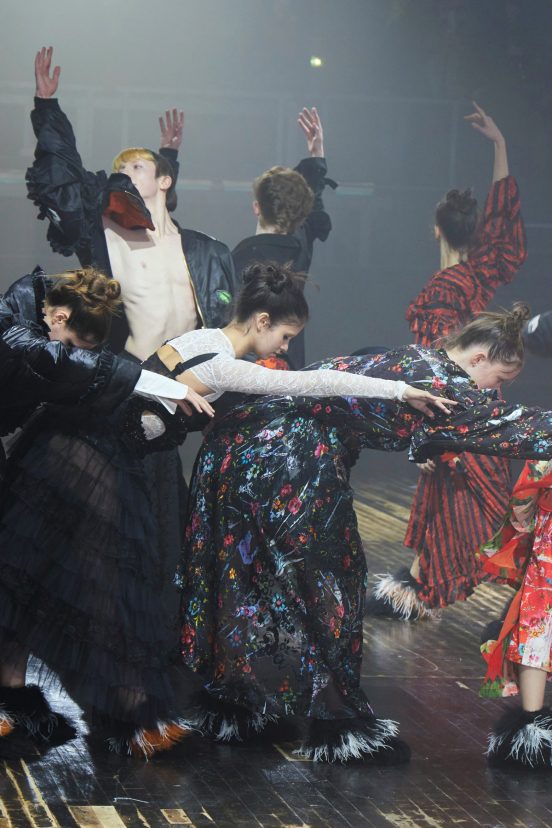Review of Preen by Thornton Bregazzi Fall 2022 Fashion Show
The Tapestry of London Life
By Anna Ross

This afternoon, Preen by Thornton Bregazzi made London Fashion Week great again. From the venue (Heaven: one of London’s most famous LGBTQI+ superclubs), to the performance (models were replaced by dancers from the English National Ballet School, choreographed by Monique Jonas) – all the way to the eccentricity and eclecticism of the clothes –
This show single-handedly re-affirmed why London is one of the most exciting cities in fashion.
For those of you who have been reading my reviews thus far (thank you for hanging in there!), you’ll have heard me chime the commerciality vs. creativity bong more than a couple of times so far this season. You could look at these images and imagine Preen destined for the same commentary – but no. You could easily take these looks apart and imagine them styled up or down; at home or at a garden party; at a nightclub or at the theater – all the places that make London rich with its vibrant, abundant, eclectic culture.



That very culture was a central narrative to Preen’s plot. There were no show notes. Instead, a ‘shelfie’ of a stack of books that have been on the designers’ reading list for the season. There was Derek Ridgers photography series, ‘London Youth’ and ‘The Others’ which captures the streets, clubs, basement and bars of London between 1978 and 1987; Simon Reynolds’ Rip it Up and Start Again’ – essential reading for any fan of post-punk music; Micheal Clark’s ‘Cosmic Dancer’, a book from the 1980’s artist, who was famed for bringing together his classical ballet training with London’s fashionable club scene; and Jeanne Hyvard’s ‘The Dead Girl in a Lace Dress’ – a coming of age story about a girl whose mother is intent on over-riding her identity.
Together, these tales told a collective story of anarchy, angst, art, individualism and identity.



Of course, for Justin Thornton and Thea Bregazzi, their own coming of age is rooted in the heydays of the ’70s and ’80s, and their collection was a beautiful extension of their own nostalgia. With that, semblances of nights out, day trips, art-school parties, all-nighters and wild romances were woven together like the tapestry of London life. There was anarchy in giant bomber jackets with iron-on patches, heartache in layered up laces, subversiveness in glory-hole-like cutouts and decadence in historic faded furnishing florals. There was a delicacy and decidedly romantic mood seen in diamanté corsetry, pieced together shirring and giant feather bustles – a nod to a very different era of fashion history.
These were the eclectic, art-school kids of London town, finding themselves, feeling themselves – most likely feeling each other – dancing, frolicking, uniting as one.



The performance of the production was powerful and poignant. You could feel a sense of togetherness and rebellion in the same hand. Many of the London-based audience will recognize themselves in much of the collection and its surroundings. I’ve spent many an evening (and morning, admittedly) in the dimly lit corners of Heaven, most likely wearing my own pieced-together outfits clubbed together from the fabric cupboard that very day. It resonated.
This collection was the heartbeat of London: a place where all are welcome to express, invent and lose themselves simultaneously.
